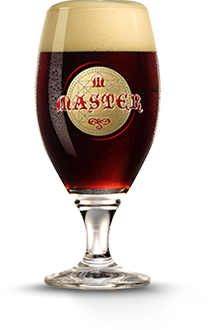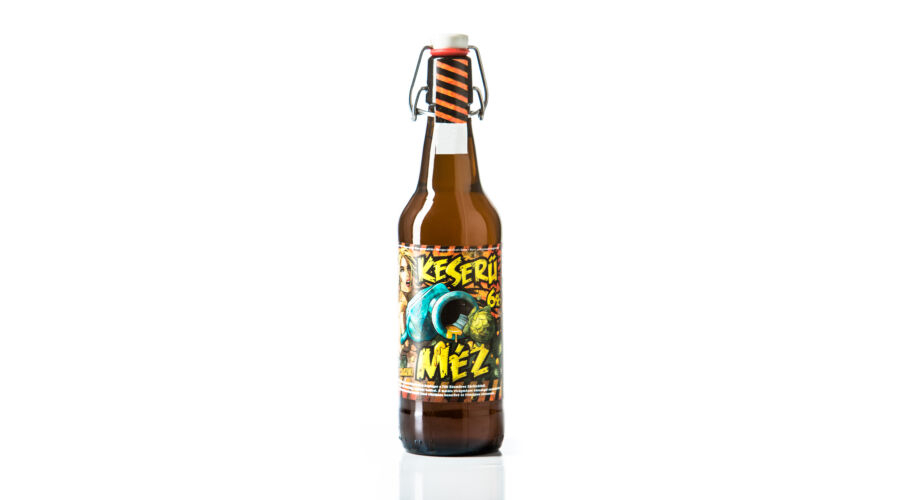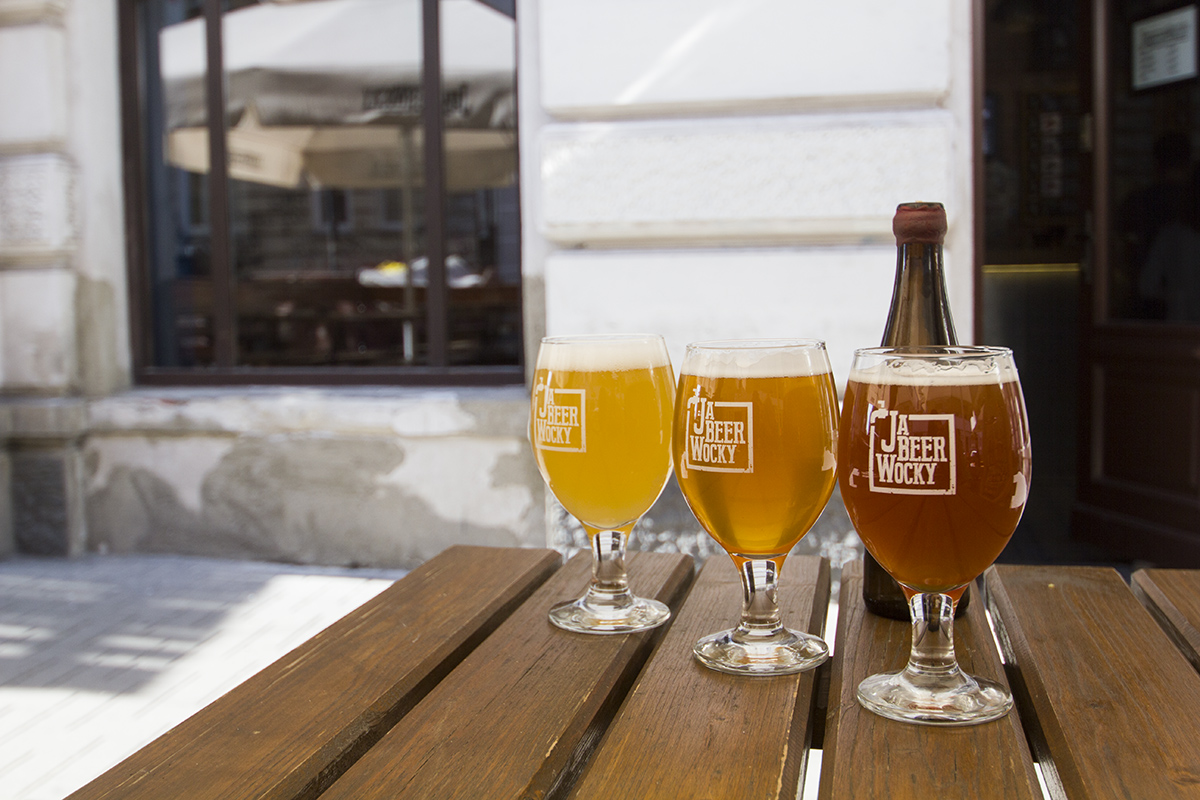Just hold on for a second and tell me when you last reminisced about beer? How many unforgettable glasses you had? Those ones, which surfaces immediately, with no need to look up in the crooks & nooks of your memory closet? Those glasses and bottles which spark nostalgia or bare meaningfulness to you?
These days we do everything on the go: drink, eat, talk, engage with people. In a never-ending whirl of fast life, we don’t pay attention to what we consume, be it food, drink or information. We are gradually losing the sheer joy of reveling in the moment. Have you contemplated your recent beer or have you just checked it in Untappd, and ordered another?
Here I ask you to slow down, and let me share little gems I keep dearly as milestones on this bewildering beer road of mine. Those which I don’t need to call out - they are always close to mind and heart. Those brightest recollections of past; powerful and luminous as a supernova because of place, circumstances or being an eye-opening experience.
 |
| Prague, May, 2008. Plzensky Prazdroj Master Tmavý 18° |
Early May in Prague is flooded with tourists, as they spill off the banks, literally and figuratively. I still have no idea who’s genius idea it was to go for a honeymoon trip to Prague (I was not even a beer drinker as much) in one of the busiest periods of the year, but we went nonetheless. That was the first, and the last tour of ours bought through an agency. Old cranky bus, huge noisy group, boring guide, crowded sightseeing spots. So we bought a map, and waved them goodbye, just to meet on the way back home. And that was an adventure to take, a magnificent medieval city to explore. Shady cobbled streets, framed by neat houses, terracotta tiled roofs, clanking of old trams, luscious parks in bloom, rolling waters of Vltava under the Karluv bridge, towers & spires, Gothic cathedrals, and a snug traditional pivnice - where waiters count your beers putting strokes on paper coasters. And inside one of these ‘lost in time and space’ taverns – I won’t be able to remember the name or address for all the world – I was brought a glass of Master Tmavý. A glass of a revelation. A revelation of “So, beer can taste like this?!”. That glass has opened a Pandora’s box, and it still hasn’t been shut.
| Bruges, September, 2010. Rodenbach Grand Cru |
Gauthierz Brasserie is a snug little place, on the canal facing Concertgebouw, in Bruges. And this evening, every surface is flooded with golden glow. The air is shimmering, thin as gossamer, a bit chilly, but still soaked by the light and warmth of day. A waitress brings me a glass (I already know this country’s custom of serving each beer in it’s own glass), and a bottle of beer I’ve chosen because of the beautiful name. She pours half a glass, and leaves me one on one with the Grand Cru. The aroma is slightly disturbing, and intriguing, unlike anything I’ve drank before. Its whiffs remind me of wild strawberries from Grandma’s garden, and homemade cherry vinegar. I sip cautiously, putting the glass down, unsure if I like it, pondering if I should continue to drink.. This unimaginable blend of sour, sweet and woody astringency unwinds on my tongue, and captivates me. And while I’m still a bit hesitant, the flavour opens up, and I give in. I finish this bottle, and order one more. This experience shatters my understanding of beer, deconstructing “typical” flavours and aromas. I’m almost crying over the glass, thinking a beer like this will never find an audience in my country, and would never be imported.
Thank God I was wrong. But ever since my life, and the lives of people whom I’ve introduced to Flemish sours, has never been the same.
 |
| Budapest/Fot, September, 2014. Fóti Kézműves Sörfőzde Keserű Méz |
You can ride a bicycle one of two styles: boring and adventurous. Of course, we always opt for the latter. So instead of leisurely riding along Duna, we decided to take a detour to a local brewery in a nearby village. But, as it sometimes happens, the road on the map turned out to be an upward path through the meadow of knee-high grass tangling your legs. Breathless, we carried the bikes, and dreamed of beer. Crossing a meadow, a grove, another meadow, sweating under the baking sun, and swearing to the tune of birds, we at last found something akin to a road - and after a few meters, stumbled upon a gate. Just so you know, a brewery in a Hungarian village is not a brew pub, it’s a dwelling. The owner here, brews on the ground floor, and lives with his family upstairs. There was a table, and a few benches in the courtyard, but something told us those were not for guests. Even though we didn’t speak Hungarian, and the owner didn’t speak English, our apparent exhaustion, and universal language of beer, needed no translation. We both got two glasses of fresh cold beer (named Keserű Méz – Bitter Honey, which was one of the first beers of new wave Hungarian small brewers) straight from the tank. We drank it happily, sitting on a long rustic bench, enjoying the weather, and the view. What bliss! We had to ride the non-existing road through a field (another one though) again, but that’s a different story for another time.
Beer connects people.
| Kyiv, January, 2017. Goose Island Bourbon County Brand Stout 2016 |
To this date, our small bottle-sharing club has tried a few thousand beers already. Having traveled Europe far and wide, I’ve gotten my hands and receptors on local stuff, and various imports, so more or less, I can imagine what awaits me in every single glass. So I’m nonchalantly looking at the last bottle of ten we share this one night. In the dim light, this unpretentious black bottle with no label - just a collar with brewery, beer name, year and alcohol content - doesn’t promise much. 13,8% ABV. Well, we brace ourselves - beers of such magnitude tend to be too much in your face, unbalanced, and aggressive. It pours like dark molasses; like oil - thick & viscous - and the aroma makes you dizzy. If smell could sound, this would be deafening - it knocks you down like an avalanche. I could spend all night just contently sniffing the glass. And here comes the taste. Receptors soon forget the language they use to convey signals of what’s happening to the brain properly. After the avalanche of aroma, comes a tsunami/earthquake/tectonic shift of flavour. For the first time in my life, I imagine the taste as a band unrolling on my tongue. It unwraps in my mouth nonstop, and changes every few seconds. Here’s toffee, here’s toasted coconut, overridden by soft woodiness, and oh here goes salted caramel, but where is it coming from?! I’m overloaded trying to process all of this, stunned and simply enjoying. I'm reminded that there are so many more things to explore in the world of beer.
PS. I promise myself to visit the brewery, which I’ll accomplish in a year.
| Kyiv, October, 2017. Varvar Brew Hay Day |
It’s a heck of a day - full of hushed conversations, whizzling of a drill, and barely hidden excitement. We have no idea where are we heading with this barrel aging project, but today is the day of truth. Today we’ll get a glimpse of the future through a tiny hole in each oak belly, and will get to know either if it hides a miracle, or holds bitter disappointment. One of the barrels bares the provisional title, “Farmhouse Ale”. The beer inside doesn’t have a name yet, but does have character; untamed and stubborn. It doesn't pour obediently, but spurts the first drops to the floor. And when I tuck my nose into the glass, marked by the fingerprints of my team, receiving my first sniff, a thought - only one - thumps wildly in my head, like the heart of a small bird… “We’ve done it!”. Yes, the golden liquid has a royal flush; all the aromas of hay, meadow grass, and flowers, with hints of horse-blanket, and a bit of barn aroma. A flavour to be proud of. A beer, which would be talked about by saying, “If I hadn’t opened the bottle myself, I would have thought it’s Belgian”. I step behind shiny tanks to hide tears of joy while our yeast whisperer drills another hole in the unknown turf of a barrel.
Hay Day is the final decided name, and we are bottling it that next week.
These five I vividly remember and cherish dearly. What are your memorable pints?
Насправді, пити пиво в сенсі свідомо вживати напій я почала лише на першому курсі інституту, від нудьги, коли ходиш з друзями на посиденьки, вони цмулять пиво, а твій сік чи кава закінчуються значно швидше. Тоді 99% споживаного мною пива варили Оболонь і Хмельницький пивзавод. Але наріжних каменів моєї пивної історії на сьогодні п'ять. Така символічна кількість, яскравих, як супернова, епізодів, чиє сяйво почасти залежало від місця й обставин, почасти від своєї новизни і сили руйнації чергового шару обмежень уяви.
Хронологічно.
Сьогодні мені у паспорт вклеїли японську візу. Враховуючи, що писати я буду багато, дуже багато, і фоточок буде мегатонна, то краще я почну про підготовку розказувати завчасно.
Отже, віза. До 1го січня цього року отримати її (туристу) було дуже складно і дорого, оскільки потрібне було запрошення на будь-який візіт, робочий, в гості чи туризм. Цього року уже не потрібно.
На сайті є вичерпна інформація про те як подаватися (без запису і черги), перелік потрібних документів, зразки заповнення анкети (подивіться, там не все очевидно) і практично вся інформація.
З того, що написано, але не всі читають:
- ніяких степлерних скоб, анкета на одному аркуші паперу
З того, що ненаписано, але важливо:
- для тих хто працює: довідка з роботи і виписка з банку, для підприємців: виписка з банку і копія свідоцтва, для безробітних: виписка з банку чи спонсорський лист в довільній формі і виписка з банку спонсора
- віза безкоштовна, рішення вам скажуть в день подачі
- паспорт на період друку візи (5 робочих днів) не забирають, його треба принести в потрібний день і її туди вклеють
- візу видають на три місяці (час дії), початок в день вклейки візи в паспорт, тому не робіть її сильно заздалегідь, дати планованого заїзду ніде не фігурують.
Житло можна знайти на будь-який гаманець, і воно не дорожче за Скандинавію, а місцями і зовсім європейські ціни, залежно від ваших потреб. Наприклад, сучасна квартира в Токіо з мобільний вайфаєм (дуже корисна опція) на двох орієнтовно 60-70 євро, окрема кімната в хостелі, переробленому з традиційного рьокану, тобто татамі, футони, оцеусе в горах - 40 євро, в Кіото квартира в гест-хаусі - 65 євро на двох. А от пересуватися між цим усім і дорого.
Транспорт - це вочевидь, найбільша частина витрат в Японії, насправді. Для туристів в Японії є купа корисних штук, наприклад проїзний на залізницю. Він покриває усі напрямки, що дає JR - японська залізниця, крім двох супершвидкісних сінкансенів, при тому, в містах, в тому ж Токіо, станції теж є. Коштує цей пас на тиждень близько 300 долларів на лице, і буде справді корисний, якщо ви переїжджаєте з міста у місто. На сайті є калькулятор, який дозволить вам порахувати, чи вигідно вам брати пас, або дешевше буде окремий квиток (https://www.japan-guide.com/railpass/). Плюс, залізниці в Японії не лише державні, їх безліч приватних, маленьких і цей пас їх не покриває. Навіть на Фудзі ви державними не доберетесь, остання ділянка перед горою - приватна. Тому дуже корисно користуватися офіційними апами, які дозволяють порахувати варіанти добирання, почитати заздалегідь, які туристичні квитки-проїзні існують і де вам краще оселитися - ближе до центру і ходити пішки, чи трохи далі і брати проїзні. Тобто, розвідку доведеться перед поїдкою робити дуже пристойну. Але її вам доведеться і так робити дуже докладну, інакше ви не зможете написати потрібний план перебування для посольства. Детальніше про транспорт буде вже з місця подій.
Квитки. З досвіду моїх пересувань між поясами, краще брати переліт, який прилітає вночі, щоб одразу лягти спати, так організму легше перенести зміну і jet-lag не так сильно псує вам досвід. Але тут у кожного свої особливості. У різних авіакомпаній в різний час проходять різноманітні акції, тому можна відхопити більш-менш не астрономічний квиток, але чим ближче дата вильоту, тим дорожчими вони будуть.
Ну, поки що все.
Отже, віза. До 1го січня цього року отримати її (туристу) було дуже складно і дорого, оскільки потрібне було запрошення на будь-який візіт, робочий, в гості чи туризм. Цього року уже не потрібно.
На сайті є вичерпна інформація про те як подаватися (без запису і черги), перелік потрібних документів, зразки заповнення анкети (подивіться, там не все очевидно) і практично вся інформація.
З того, що написано, але не всі читають:
- ніяких степлерних скоб, анкета на одному аркуші паперу
З того, що ненаписано, але важливо:
- для тих хто працює: довідка з роботи і виписка з банку, для підприємців: виписка з банку і копія свідоцтва, для безробітних: виписка з банку чи спонсорський лист в довільній формі і виписка з банку спонсора
- на готелях і квитках має бути ціна і прізвище, виписка з банку з мокрою печаткою
- якщо ви подорожуєте удвох, то план мандрів і житло подавайте в одному екземплярі- віза безкоштовна, рішення вам скажуть в день подачі
- паспорт на період друку візи (5 робочих днів) не забирають, його треба принести в потрібний день і її туди вклеють
- візу видають на три місяці (час дії), початок в день вклейки візи в паспорт, тому не робіть її сильно заздалегідь, дати планованого заїзду ніде не фігурують.
Житло можна знайти на будь-який гаманець, і воно не дорожче за Скандинавію, а місцями і зовсім європейські ціни, залежно від ваших потреб. Наприклад, сучасна квартира в Токіо з мобільний вайфаєм (дуже корисна опція) на двох орієнтовно 60-70 євро, окрема кімната в хостелі, переробленому з традиційного рьокану, тобто татамі, футони, оцеусе в горах - 40 євро, в Кіото квартира в гест-хаусі - 65 євро на двох. А от пересуватися між цим усім і дорого.
Транспорт - це вочевидь, найбільша частина витрат в Японії, насправді. Для туристів в Японії є купа корисних штук, наприклад проїзний на залізницю. Він покриває усі напрямки, що дає JR - японська залізниця, крім двох супершвидкісних сінкансенів, при тому, в містах, в тому ж Токіо, станції теж є. Коштує цей пас на тиждень близько 300 долларів на лице, і буде справді корисний, якщо ви переїжджаєте з міста у місто. На сайті є калькулятор, який дозволить вам порахувати, чи вигідно вам брати пас, або дешевше буде окремий квиток (https://www.japan-guide.com/railpass/). Плюс, залізниці в Японії не лише державні, їх безліч приватних, маленьких і цей пас їх не покриває. Навіть на Фудзі ви державними не доберетесь, остання ділянка перед горою - приватна. Тому дуже корисно користуватися офіційними апами, які дозволяють порахувати варіанти добирання, почитати заздалегідь, які туристичні квитки-проїзні існують і де вам краще оселитися - ближе до центру і ходити пішки, чи трохи далі і брати проїзні. Тобто, розвідку доведеться перед поїдкою робити дуже пристойну. Але її вам доведеться і так робити дуже докладну, інакше ви не зможете написати потрібний план перебування для посольства. Детальніше про транспорт буде вже з місця подій.
Квитки. З досвіду моїх пересувань між поясами, краще брати переліт, який прилітає вночі, щоб одразу лягти спати, так організму легше перенести зміну і jet-lag не так сильно псує вам досвід. Але тут у кожного свої особливості. У різних авіакомпаній в різний час проходять різноманітні акції, тому можна відхопити більш-менш не астрономічний квиток, але чим ближче дата вильоту, тим дорожчими вони будуть.
Ну, поки що все.
Wizzair має прекрасні рейси до Варшави (щоправда, трохи пізно прилітає, але), для того, щоб чухнути туди на вікенд не треба брати додаткових вихідних, в п'ятницю ввечері вилітаєш, в неділю ввечері повернувся. Хороший варіант для вічно зайнятих, але охочих до нового пиволюбів.
Аеропорт Шопена маленький, затишний, і дуже поруч з містом, практично як наші Жуляни. Ми літали в гості, тому наш вікенд перетворився на суміш гуляння, величкакатання і пива. Тут, власе, буде про пиво.
Легенда про дешеве польське пиво потроху і правда перетворюється на легенду, тому що ціни у порівнянні з минулорічними і позаминулорічними поїздками змінилися пристойно. Для розуміння цін в гривні множте на 7,6.
Ще одне цікаве спостереження - зовсім інше ставлення до "обгортки". Дизайн? Брендоване скло? Ой та облиште ви ці дурощі, ви на пиво прийшли, чи на стіни дивитися?
Отже, поїхали.
Найстарший з відвіданих заклад, заклад з брендованим склом, смачню (пабною) їжею і хорошим вибором пива на кранах і в пляшках - Jabeerwocky (Nowogrodzka 12, jabeerwocky.pl)

Аеропорт Шопена маленький, затишний, і дуже поруч з містом, практично як наші Жуляни. Ми літали в гості, тому наш вікенд перетворився на суміш гуляння, величкакатання і пива. Тут, власе, буде про пиво.
Легенда про дешеве польське пиво потроху і правда перетворюється на легенду, тому що ціни у порівнянні з минулорічними і позаминулорічними поїздками змінилися пристойно. Для розуміння цін в гривні множте на 7,6.
Ще одне цікаве спостереження - зовсім інше ставлення до "обгортки". Дизайн? Брендоване скло? Ой та облиште ви ці дурощі, ви на пиво прийшли, чи на стіни дивитися?
Отже, поїхали.
Найстарший з відвіданих заклад, заклад з брендованим склом, смачню (пабною) їжею і хорошим вибором пива на кранах і в пляшках - Jabeerwocky (Nowogrodzka 12, jabeerwocky.pl)

На платформі Blogger.



